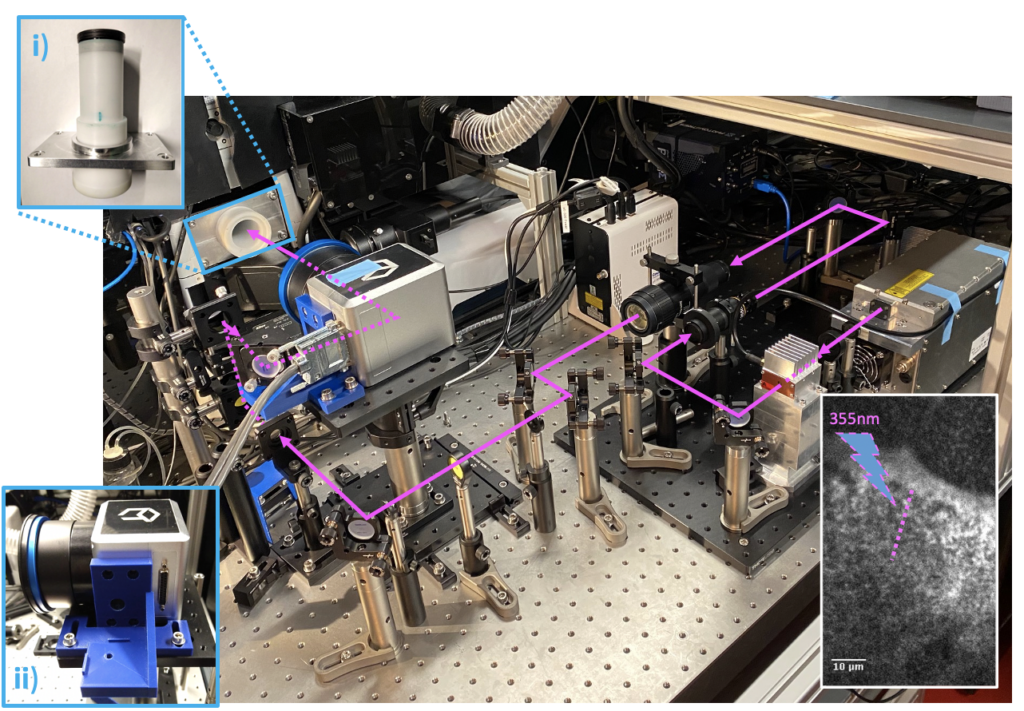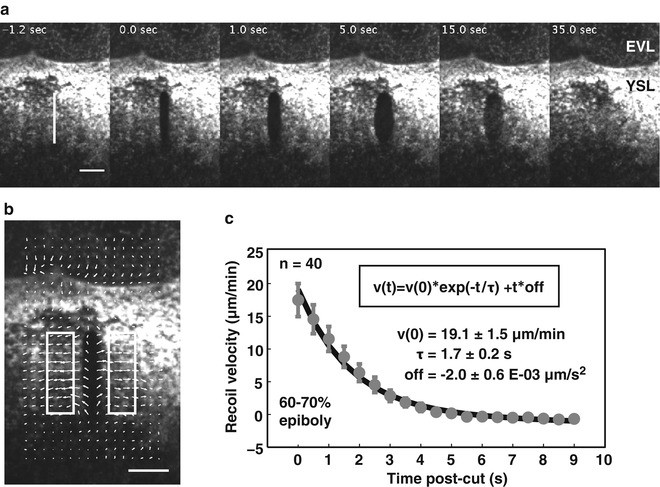The UV laser ablation functionality was initially built on the Andor CSU-X1 Spinning Disk Confocal Microscope (retired). The UV ablation system uses a high-power pulsed 355nm UV laser, and has been completely redesigned and built up from scratch on the Nikon CSU-W1-01 Sora/IR system, to be integrated in the Nikon NIS software. This allows interactive experimental setup using macro and JOBS.
UV ablation setup

(Yann Cesbron, IOF, ISTA)
UV laser ablation can be used to quantitatively determine mechanical tension in tissues and cultured cells, but also to do selective ablation of cells or structures.
- UV laser can be used to locally induce damage to cells or structures to study the regenerative power of the tissue.
- The recoil velocity of a microdissected line the the cells actin cortex is proportional to the mechanical tension in the tissue.
More information: Smutny M., Behrndt M., Campinho P., Ruprecht V., Heisenberg CP. (2015) UV Laser Ablation to Measure Cell and Tissue-Generated Forces in the Zebrafish Embryo In Vivo and Ex Vivo. In: Nelson C. (eds) Tissue Morphogenesis. Methods in Molecular Biology (Methods and Protocols), vol 1189. Humana Press, New York, NY. https://doi.org/10.1007/978-1-4939-1164-6_15
https://link.springer.com/protocol/10.1007/978-1-4939-1164-6_15

